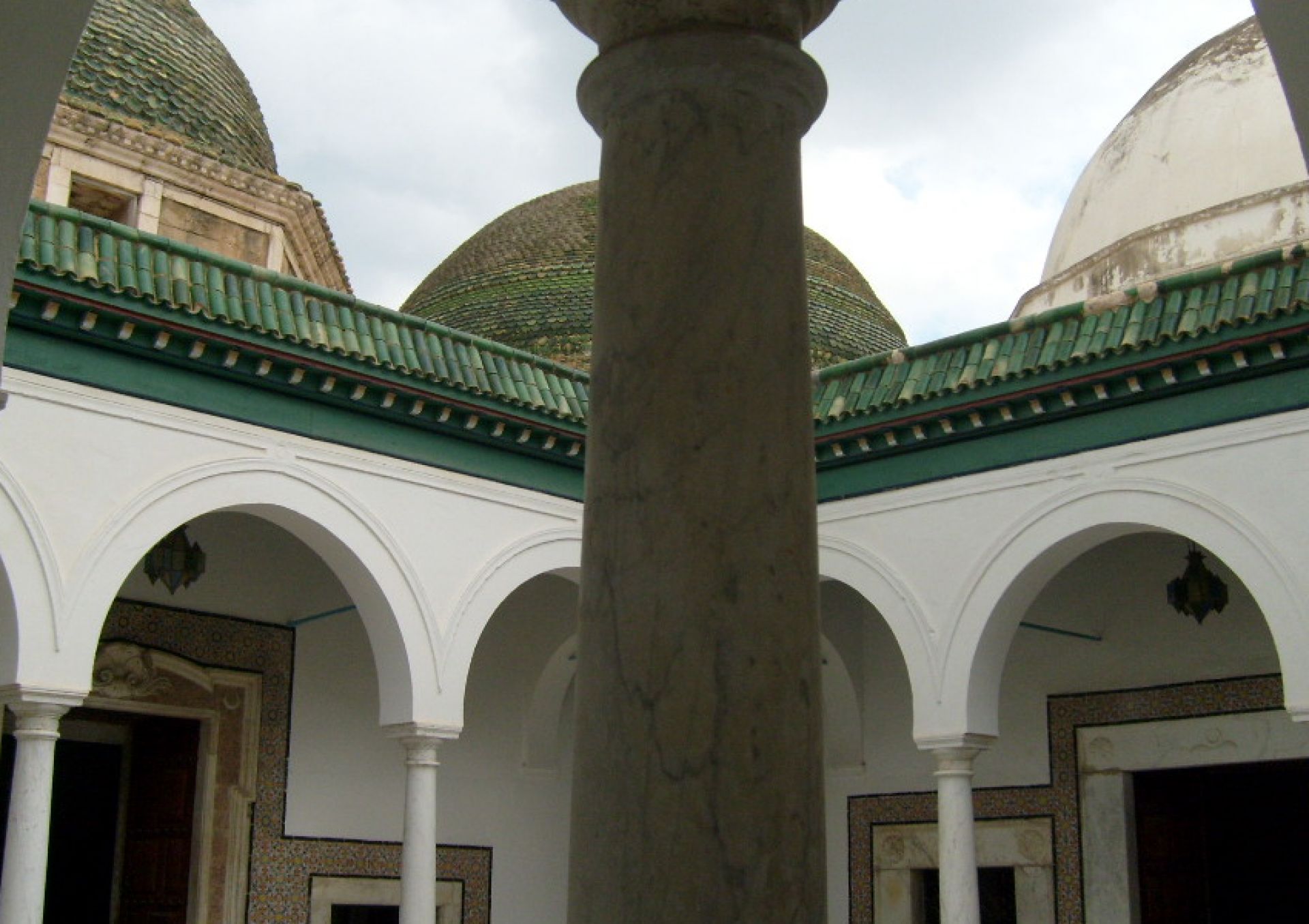All content and media files are published under a Creative Commons Attribution-ShareAlike 4.0 International License (CC BY-SA 4.0)
Turbans, fezzes, headscarves: there are hats for every taste. No, you are not in a hat shop or a fashion show but in a mausoleum. It is a large building with an emerald-colored roof, the last refuge of the rulers of Tunisia.
The burial of the lords first appeared there in the middle of the 18th century. Do not be scared. All the tombs are closed and crowned with the deceased's favorite headdress. Although a cemetery is always frightening, you somehow linger near the beautiful grave to read the date of death and the name of the buried. There's something special about it. In the Tourbet el Bey Mausoleum there are about eight burial chambers. Each of them contains several people, including the deceased ruler, members of his family, wives, concubines, and faithful servants.
In appearance, you can never say that this beautiful building that combines the Ottoman and Italian style is the mausoleum. It looks more like a small palace. The mausoleum is decorated with a large emerald-colored dome. Passing through the massive gates that guard the peace of the dead, you enter a quiet courtyard. The floor is paved with white marble tiles and framed by Carrara marble columns. In the depths, behind the columns and galleries, there is a room where almost no beams of light fall. That's where the tombs are. Each of them has the shape of an Ottoman mosque. There are several such courtyards. Some of them have orange trees in the center.
Inside each chamber, you want to stay to examine each sarcophagus and to study all the tiles on the walls, beautiful chandeliers, and small stained-glass windows under the ceiling. The walls are also decorated with beautiful bright stucco. Here and there are the names and titles of those who are buried there.
Even if you are, literally, in a small cemetery, there is no sense of sadness. The Tourbet el Bey is a very pleasant place because its architecture and interior design are prepossessing.
